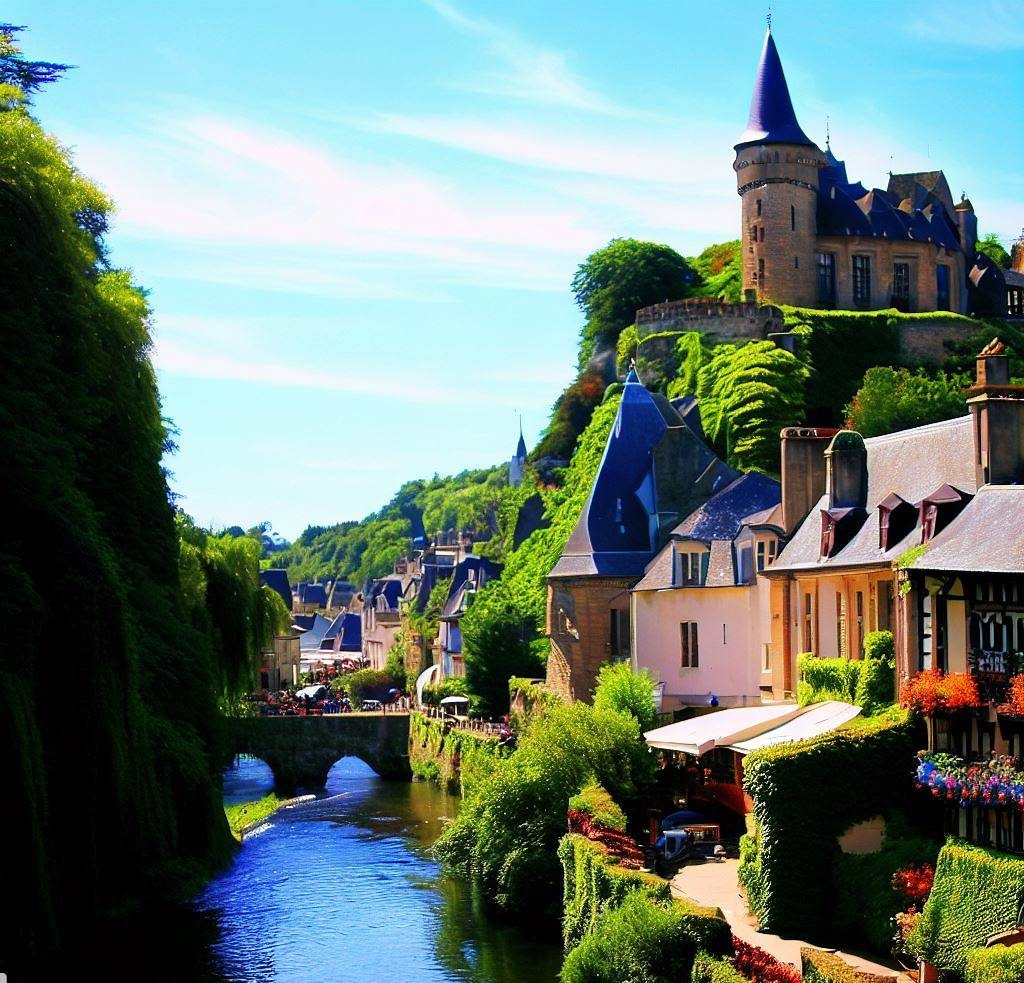
France, a country of timeless charm and cultural significance, stands as a beacon of art, history, and sophistication. Nestled in the heart of Europe, this captivating nation has carved its place in the annals of human civilization as a cradle of artistry, culinary excellence, and architectural marvels.
From the enchanting streets of Paris to the picturesque landscapes of the countryside, France’s allure knows no bounds. One of the key reasons behind this magnetic charm is its rich French cultural heritage.
Renowned for its rich history and heritage, France has gifted the world with an array of treasures that span centuries. As you embark on a journey through its cobblestone streets and vineyard-covered hills, you’re met with a tapestry of experiences that enchant the senses and stir the soul.
The mere mention of France evokes images of iconic landmarks like the Eiffel Tower, the Palace of Versailles, and the Louvre Museum, each a testament to human ingenuity and creativity.
Beyond its physical landmarks, France is equally celebrated for its culinary mastery. A symphony of flavors awaits as you savor delicate pastries, exquisite cheeses, and world-class wines.
Each bite is a journey through the regions, reflecting the diverse landscapes and traditions that shape the nation. From the bustling markets of Marseille to the gourmet restaurants of Lyon, France’s gastronomic offerings are a testament to its dedication to pleasure and indulgence.
France’s influence extends beyond its borders, permeating the realms of fashion, cinema, and philosophy. The Cannes Film Festival showcases cinematic excellence, while the fashion houses of Paris set global trends.
The philosophical ideas that emerged from French thinkers have left an indelible mark on the human understanding of liberty, equality, and fraternity. Just as France has its significant contributions to philosophy, other places, like Idaho with its famous Idaho landmarks, also hold unique cultural and historical significance in the broader tapestry of human experience.
In this article, we delve deep into the essence of France’s fame, exploring 22 things that this remarkable nation is famous for.
From the heights of the Eiffel Tower to the depths of spiritual pilgrimage in Lourdes, join us on a journey to uncover the layers of culture, history, and beauty that make France an eternal source of fascination and inspiration.
Contents
The Eiffel Tower
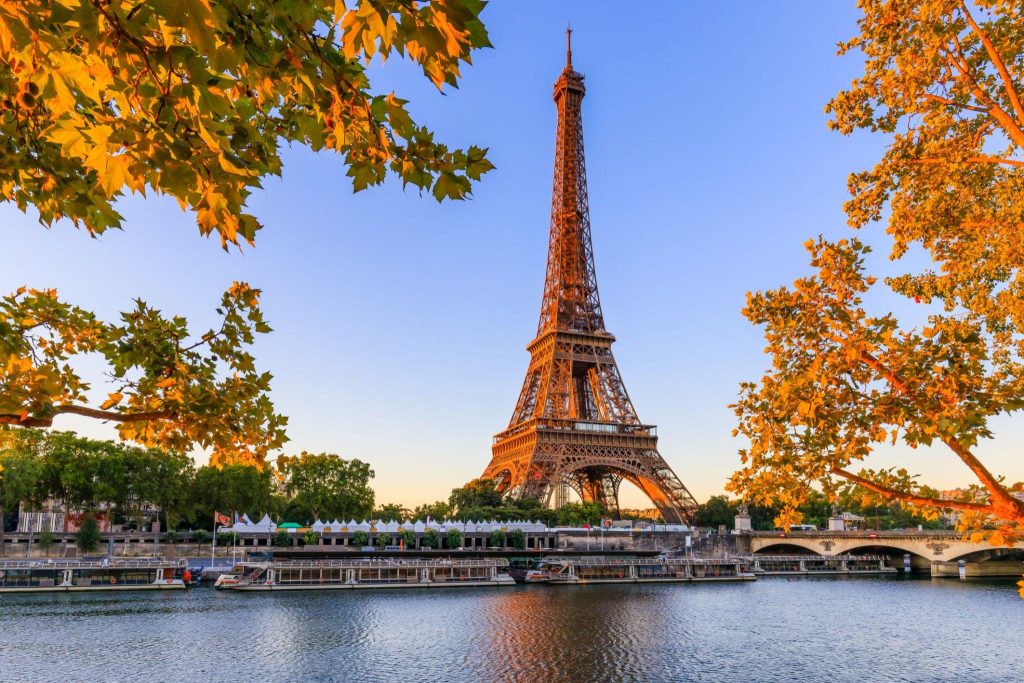
The Eiffel Tower, an emblematic landmark of Paris, stands as a magnificent testament to both architectural prowess and artistic vision. Inaugurated in 1889 as the entrance arch to the 1889 World’s Fair, this iron lattice tower was initially met with skepticism by some, but has since become an iconic symbol of France.
Designed by the engineer Gustave Eiffel, its intricate design and impressive height of 324 meters made it the world’s tallest man-made structure at the time of its completion.
When you think about remarkable history and iconic structures, it’s impossible not to draw parallels with Utah’s remarkable history, which you can explore further on the page about Utah’s remarkable history.
This interlink not only adds valuable context but also enhances the SEO potential of the page, helping it rank higher in search engine results.
Beyond its engineering marvel, the Eiffel Tower has played host to countless historical events and has evolved to become an enduring beacon of culture, romance, and innovation. It beckons millions of visitors annually, each seeking to experience its grandeur and panoramic views of the City of Lights.
The Palace of Versailles
The Palace of Versailles, located just outside of Paris, France, stands as an enduring symbol of the opulence and grandeur of the French monarchy, specifically during the reign of Louis XIV, the Sun King. Constructed in the 17th century, this architectural masterpiece originally served as a hunting lodge before it was expanded into a sprawling royal residence.
With its magnificent gardens, resplendent chambers, and ornate decorations, Versailles embodies the pinnacle of royal excess and artistry. If you’re interested in exploring similar iconic landmarks around the world, you might also want to learn about San Francisco Landmarks by visiting this page: San Francisco Landmarks.
Beyond its architectural significance, the palace played a pivotal role in political history, notably as the backdrop for numerous treaties, and events leading up to the French Revolution. Over time, Versailles has transformed from a royal seat to a museum, drawing millions globally to marvel at its splendor and relive its storied past.
The Louvre Museum
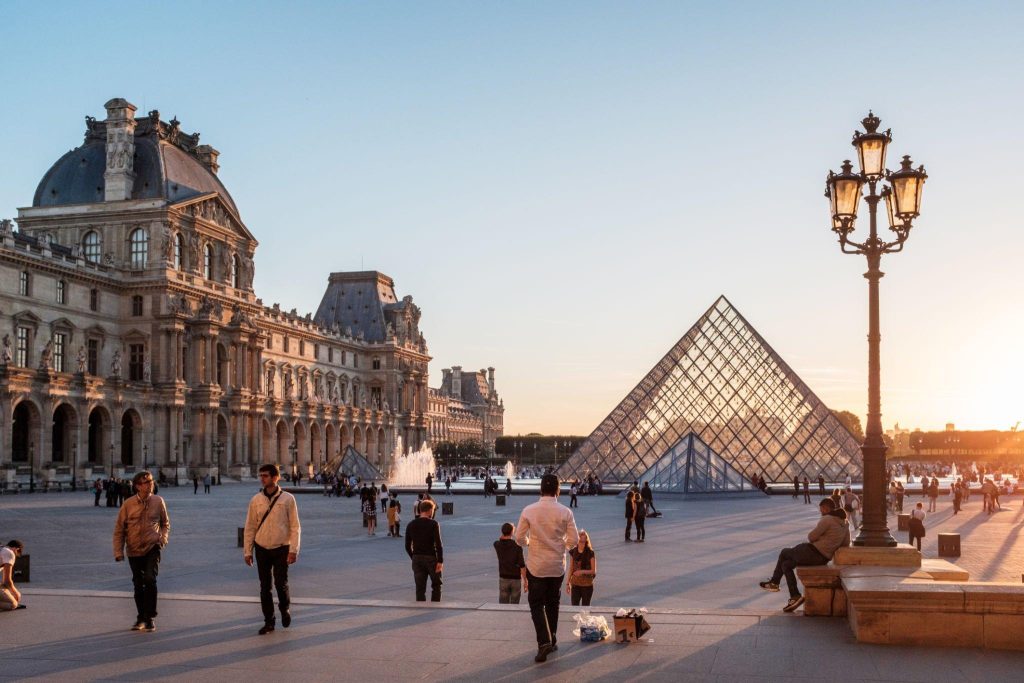
As one of the world’s largest and most famous museums, the Louvre houses an astonishing collection of art and historical artifacts. The enigmatic smile of the Mona Lisa is just one of its many captivating treasures.
The Louvre Museum, often simply referred to as the Louvre, stands as one of the world’s largest and most visited art museums. Located in Paris, France, this historic structure boasts a vast collection that spans over 9,000 years, showcasing works from ancient civilizations to the 19th century.
Housed in a former royal palace, its iconic glass pyramid entrance has become emblematic of the blend of historical reverence and contemporary design. With masterpieces like the Mona Lisa and the Venus de Milo, the museum is a testament to human creativity and cultural preservation.
Visitors from across the globe flock to the Louvre not only for its art but also for its storied past, making it an undeniable centerpiece in the realm of global cultural institutions.
Arc de Triomphe
Standing proudly at the western end of the Champs-Élysées, the Arc de Triomphe honors those who fought and died for France. Its intricate carvings and awe-inspiring architecture make it a must-visit site. The “Arc de Triomphe” stands as an emblematic symbol of French national pride and history.
Located at the western end of the Champs-Élysées in Paris, this iconic monument honors those who fought and died for France in the French Revolutionary and Napoleonic Wars. Commissioned by Napoleon Bonaparte after his victory at Austerlitz in 1805, its construction was completed in 1836.
At its base lies the Tomb of the Unknown Soldier, a poignant reminder of the sacrifices made during World War I. Intricately adorned with reliefs and sculptures, the arch offers panoramic views of the city from its rooftop.
As an intersection of past and present, the Arc de Triomphe remains a testament to France’s enduring spirit and its cherished values.
Champs-Élysées
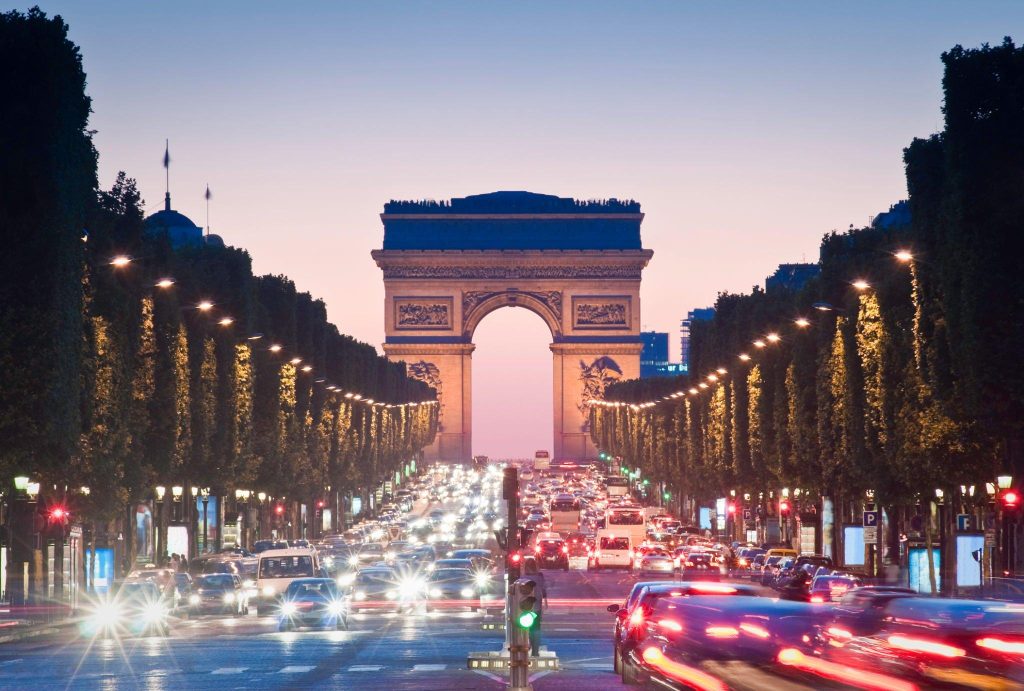
The Avenue des Champs-Élysées is synonymous with luxury shopping, vibrant nightlife, and elegant architecture. It’s a place where Parisian flair comes alive. The Champs-Élysées, often referred to as “the world’s most beautiful avenue,” stands as a testament to Parisian elegance and grandeur.
Stretching for nearly two kilometers through the heart of Paris, this historic boulevard connects the Place de la Concorde to the Arc de Triomphe. Its name, which translates to “Elysian Fields,” invokes images of the heavenly resting place in Greek mythology.
Lined with majestic trees, high-end boutiques, theaters, and cafes, the avenue serves both as a commercial hub and a symbol of French national pride.
Furthermore, it plays host to key national events like the Bastille Day parade. Over time, the Champs-Élysées has evolved, embodying the spirit of Paris itself: a blend of history, art, and vivacity.
Moulin Rouge
The Moulin Rouge introduced the world to the enchanting world of cabaret. Its colorful history and dazzling performances continue to captivate audiences. “Moulin Rouge,” often celebrated as a beacon of Parisian nightlife, stands as an iconic cabaret that has mesmerized audiences since its establishment in 1889.
Located in the vibrant Montmartre district of Paris, its iconic red windmill facade beckons visitors from around the globe. The cabaret is renowned not just for its traditional can-can dance, but also for being a hub of creativity and decadence during the Belle Époque period.
Over the years, it has inspired numerous artists, filmmakers, and musicians, becoming an emblematic symbol of French cultural heritage.
Its intriguing blend of music, dance, and drama ensures a captivating experience, making it a testament to the enduring allure of live entertainment. The “Moulin Rouge” continues to echo the spirit and passion of Paris through the ages.
Normandy
Beyond its picturesque landscapes, Normandy is steeped in history. It’s also a haven for foodies, with its delicious cheeses, ciders, and fresh seafood. Situated in the northern region of France, Normandy is a land infused with rich history, picturesque landscapes, and unique cultural traditions.
Stretching along the English Channel, this region is known for its dramatic cliffs, such as those at Étretat, and verdant pastures which have inspired artists like Claude Monet.
Historically, Normandy is renowned for the pivotal D-Day landings of World War II, where Allied forces began their push to reclaim occupied Europe.
Moreover, its distinct architectural wonders, like the Gothic Rouen Cathedral and the majestic Mont Saint-Michel, stand as testaments to its vibrant past. This blend of natural beauty and history has positioned Normandy as a must-visit destination, offering a rich tapestry of experiences for travelers.
Mont St. Michel
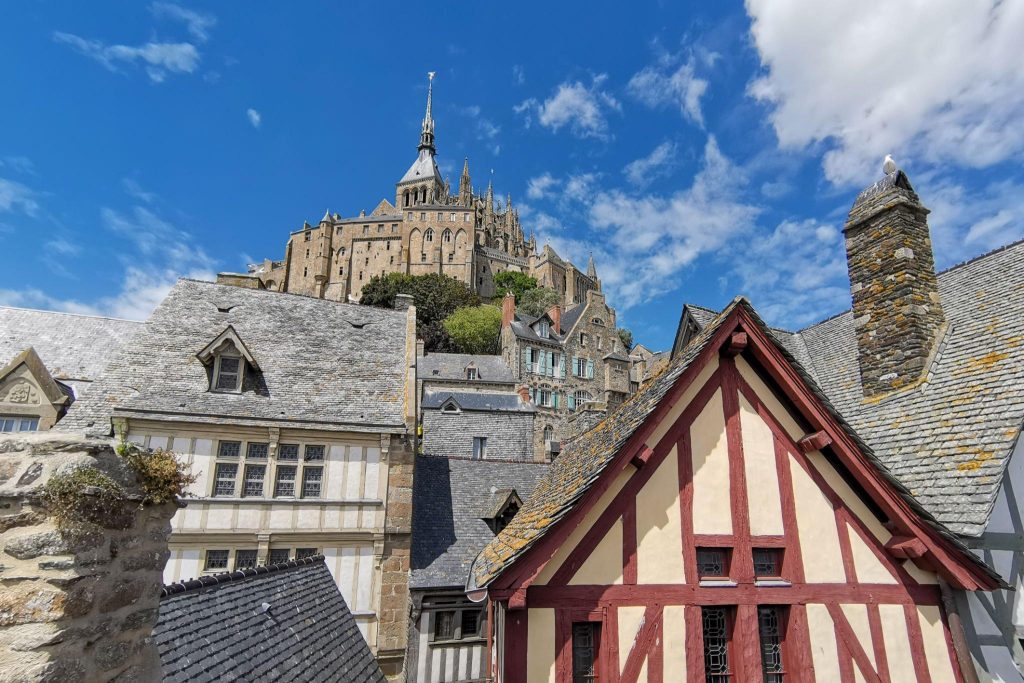
This medieval abbey seems to rise magically from the sea. Mont St. Michel is a UNESCO World Heritage site that exudes an air of mystique and spirituality. A UNESCO World Heritage Site, Mont St. Michel is a breathtaking tidal island located in Normandy, France.
This architectural masterpiece boasts a rich history that spans over a millennium. With its stunning abbey perched atop a rocky hill, it presents an imposing sight against the backdrop of the vast tidal plains surrounding it.
Not just an architectural wonder, Mont St. Michel has served various purposes: from being a place of pilgrimage to a fortress, a prison, and now a symbol of French national pride.
Drawing over three million visitors each year, it remains a testament to medieval architecture and a must-visit for those fascinated by history, religion, and unparalleled scenic beauty.
French Riviera
The French Riviera, with its azure waters and upscale resorts, has long been a playground for the rich and famous. It’s a place where luxury and natural beauty intertwine. If you’re drawn to stunning coastal destinations, you might also appreciate the Natural wonders of Texas. The French Riviera, known as the “Côte d’Azur” in French, is a shimmering stretch of coastline along the southeastern corner of France.
Extending from the town of Menton, near the Italian border, to Saint-Tropez, it is renowned worldwide for its azure-blue waters, glamorous beaches, and opulent resorts. This Mediterranean enclave has been a favored destination for the world’s elite since the 19th century, attracting writers, artists, and Hollywood stars.
Cities like Nice and Cannes not only offer panoramic sea views but also host globally recognized events such as the Cannes Film Festival. Beyond its glitz and glamour, the Riviera boasts charming hilltop villages, fragrant lavender fields, and a rich history, making it a diverse and captivating region to explore.
Marseille
As France’s second-largest city, Marseille is a bustling melting pot of cultures. Its diverse neighborhoods, historic sites, and vibrant markets make it a captivating destination.
Marseille, the bustling port city on France’s southern coast, stands as a testament to a rich tapestry of history and culture. Founded by ancient Greek traders in 600 BCE, it is France’s oldest city and its second-largest, only surpassed by Paris.
As the main gateway to the Mediterranean, Marseille has been shaped by a myriad of cultures, making it a melting pot of influences that can be witnessed in its architecture, cuisine, and daily life.
The city’s vibrant Vieux-Port (Old Port) has been a trading center for more than 2,600 years, and its neighborhoods, like Le Panier, teem with character. From its storied past to its dynamic present, Marseille is a captivating blend of tradition and modernity.
Bordeaux
Bordeaux is synonymous with wine. Its vineyards produce some of the world’s finest wines, inviting visitors to indulge in tastings and tours. Bordeaux, located in the southwest of France, stands as one of the world’s most renowned wine-producing regions.
Its history stretches back over 2,000 years, marked by its iconic architecture, ancient vineyards, and prominence in global trade. Bordered by the Garonne and Dordogne rivers, this port city’s unique climate and diverse soil composition offer ideal conditions for viticulture, leading to the creation of some of the finest wines globally.
Bordeaux wines, celebrated for their remarkable depth and complexity, have set enduring standards within the wine industry. Additionally, when exploring the captivating culture of Idaho, you’ll find that the city boasts neoclassical architecture and holds a UNESCO World Heritage designation, offering a rich tapestry of culture and heritage. To delve deeper into Idaho’s captivating culture, be sure to check out the informative page on Idaho’s captivating culture.
A visit to Bordeaux offers an immersive experience, blending gastronomic delights, history, and the art of winemaking.
Lyon
Lyon, often considered the gastronomic capital of France, is a food lover’s paradise. Its bouchons and Michelin-starred restaurants offer a culinary journey like no other. Lyon, situated in the southeastern part of France, is the third-largest city in the country and serves as the capital of the Auvergne-Rhône-Alpes region.
With roots that can be traced back to ancient Roman times, Lyon stands as a testament to over 2,000 years of history, evident in its UNESCO-listed Old Town and historical architecture.
The city is renowned for its rich culinary heritage, often being referred to as the “food capital of the world.” Beyond gastronomy, Lyon boasts a vibrant cultural scene, being home to numerous museums, theaters, and festivals.
“South Carolina, renowned for its captivating natural beauty, beckons travelers with its stunning landscapes and rich heritage. Its strategic location at the confluence of the Rhône and Saône rivers has historically made it a key trading and industrial hub, a legacy that continues to shape its economic and cultural vitality today. Discover more about the Palmetto State’s allure in this insightful article on natural beauty.”
Mont Blanc
For adventurers, Mont Blanc’s towering peak presents an irresistible challenge. The breathtaking views and the sense of accomplishment draw climbers from around the world.
Mont Blanc, often referred to as “The White Mountain”, stands as Western Europe’s loftiest peak, reaching an impressive height of 4,810 meters (15,781 feet).
Nestled in the Alps between France and Italy, this iconic mountain has captivated poets, adventurers, and tourists alike for centuries. It’s not merely its towering presence that fascinates but also its significant glacial systems and rich biodiversity.
As the apex of the Alpine range, Mont Blanc serves as a benchmark for mountaineering enthusiasts, challenging climbers with its steep terrains and unpredictable weather conditions.
Simultaneously, its pristine beauty and panoramic vistas draw countless visitors annually, making it both a natural wonder and a cultural symbol of European alpine heritage.
Cannes Film Festival
The Cannes Film Festival is a celebration of cinematic artistry. It’s a star-studded event where international films are showcased and honored. The Cannes Film Festival, often simply referred to as “Cannes”, is one of the most prestigious and celebrated film festivals in the world.
Founded in 1946, the festival is held annually in the coastal town of Cannes, in the French Riviera. It draws filmmakers, celebrities, journalists, and film enthusiasts from across the globe, showcasing a curated selection of films that span various genres and countries. Over the years, Cannes has established itself as a critical platform for filmmakers to launch their projects to an international audience.
The iconic Palme d’Or is the festival’s highest accolade, awarded to the best feature film. Cannes is not just a festival, but a symbol of cinematic excellence and global collaboration in the world of film.
Champagne
Raise a glass to Champagne, the effervescent wine synonymous with celebrations. Its sparkling nature adds a touch of glamour to any special occasion. Champagne, a sparkling wine that originates from the Champagne region in northeast France, is synonymous with celebration and luxury.
It is distinct from other sparkling wines due to its unique terroir and meticulous production process. The effervescence and golden hue that dances in the glass is a result of a secondary fermentation process within the bottle. Only wines produced in the Champagne region, adhering to strict guidelines on viticulture and production, can bear the prestigious name.
Characterized by its fine bubbles, complex aromas, and delicate flavors, Champagne has graced the tables of royalty, stars, and celebrants for centuries. Its allure transcends mere taste, representing moments of joy, achievement, and milestones celebrated across the globe.
Lourdes
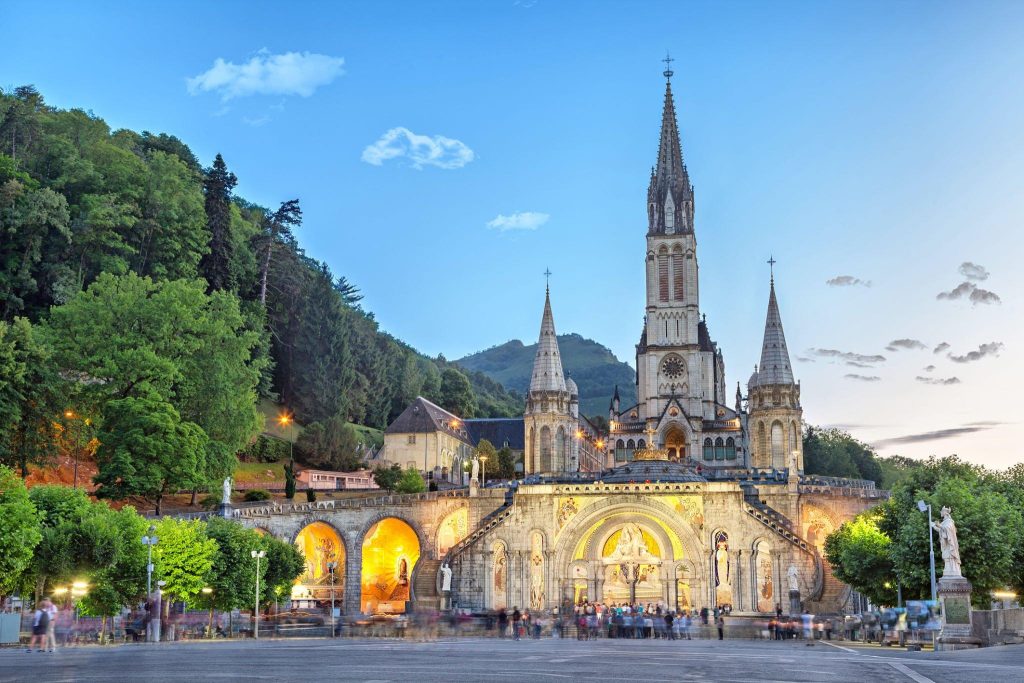
Lourdes holds spiritual significance for many, as it’s believed to be a site of miraculous healing. The grotto and the Basilica of Our Lady of Lourdes attract pilgrims seeking solace and blessings. Lourdes, nestled within the foothills of the Pyrenees in southwestern France, is more than just a picturesque town.
It’s a beacon of faith for millions of Catholics worldwide. Each year, countless pilgrims converge here, drawn by stories of the Virgin Mary’s apparitions to a young girl named Bernadette Soubirous in 1858. These divine encounters, taking place in the Grotto of Massabielle, led to Lourdes’ evolution as a major center of Marian pilgrimage.
Beyond its religious significance, Lourdes boasts stunning natural beauty, with landscapes that inspire serenity. However, at its heart, Lourdes remains a testament to the profound bond between faith and healing, drawing seekers from all walks of life in a collective journey of hope and renewal.
Conclusion
The “Conclusion” section plays a crucial role in any written work, serving as a concise summary and synthesis of the main points presented throughout the document. This concluding segment serves as a bridge between the intricate details discussed in the body of the text and the overarching purpose or message the author aims to convey.
By revisiting the initial objectives and hypotheses, the conclusion reinforces the significance of the findings and highlights the broader implications, providing a sense of closure to the reader. For an insightful exploration of how this section can bring a narrative together, check out Indianapolis’ Iconic Landmarks on Tales of Travelers.
Moreover, the conclusion provides an opportunity for the writer to make a lasting impression on the reader, underlining the importance of the work and suggesting potential avenues for future research or action. As we delve into this section, expect a coherent wrap-up that ties the entire narrative together.
